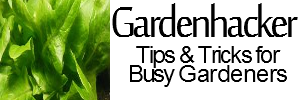RAIN. “You can’t solve rain.” – So says Merlin Mann in his latest “Back to Work” segment. Incredible to listen to him resolve issues – he’s able to verbalize thought processes like nobody I know. But enough about that – onto the next 30 minutes of gardening.
You do NOT want to prepare beds in the rain. The dirt is heavy, you compact any soil you step on, and if you’re using a tiller, you’ll create “hard pan”: a compacted area under your bed that behaves like cement, not allowing water to flow or roots to penetrate. It is good to be inside, sorting and gathering seeds, filling pots with potting soil and starting seeds.
30 minutes spent gathering the potting soil, finding the seeds, the pots and the other necessities.
Potting soil is basically soil, perlite or vermiculite and peat moss. You can substitute “coir” for the peat moss, or use leaf mould (well rotted leaves that have been ground up and left to rot for a season or two). Optionally you can add slow release fertilizer or bone meal, but many people leave this out so the plant doesn’t get either too “rooty” or too “leafy”. Many people also like a sterile soil to start the plants with for the best propagation: no bacteria or viruses = more starts, while others like a “living soil” – some of their garden soil mixed in with the perlite/vermiculite (which makes it easier for the roots to penetrate the soil, as well as retaining moisture). After our misery a few years ago with blight (thanks to wet season and a couple of starter plants from a big box store), I tend to go with sterile soil, and a light amendment of bone meal or ground eggshells, especially for the tomatoes.
You can make specific potting soils for specific needs, too – at http://www.the-artistic-garden.com/potting-soil-recipes.html, there are several variations for your cacti, bulbs, acid loving plants and more.









Recent Comments